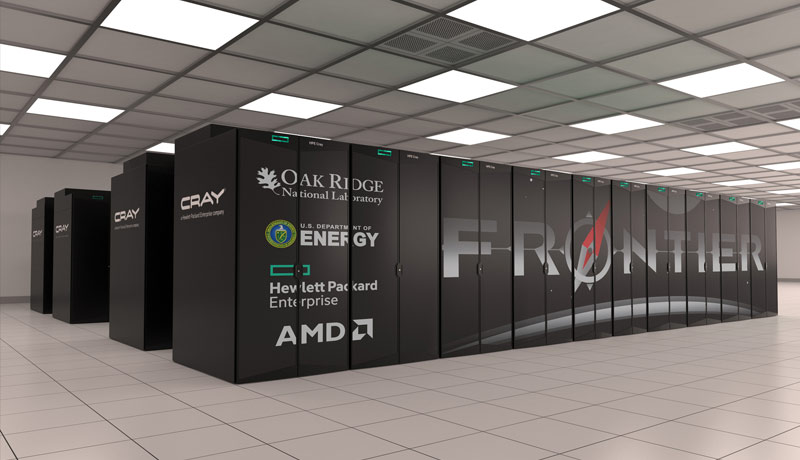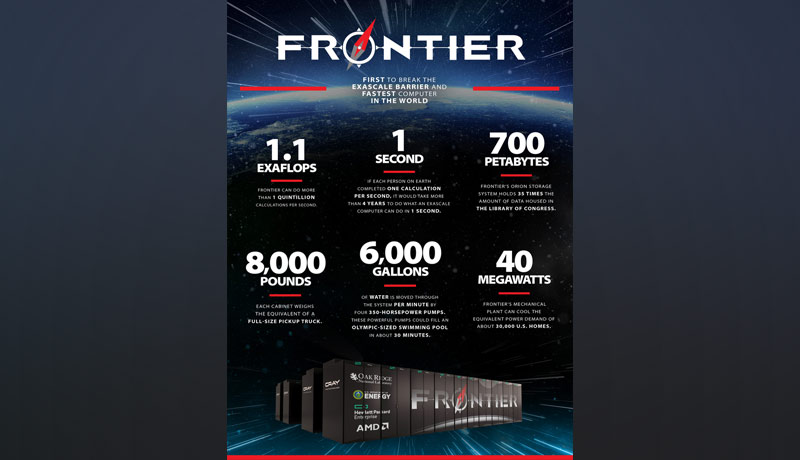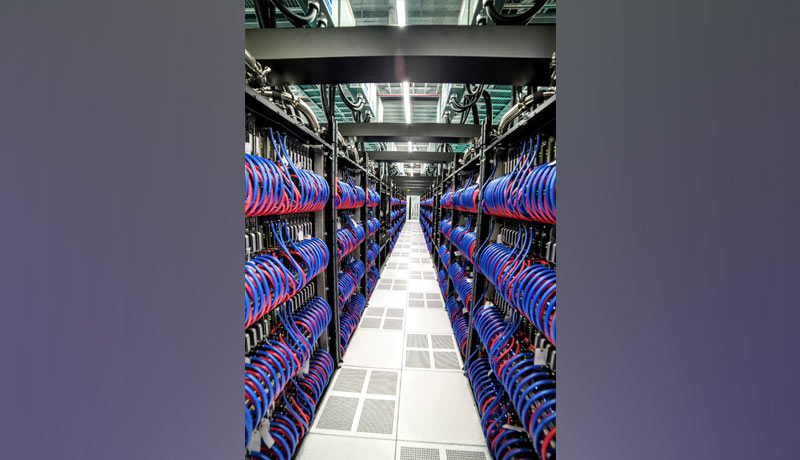
Frontier, a new supercomputer built by Hewlett Packard Enterprise for the United States Department of Energy’s Oak Ridge National Laboratory (ORNL), has reached 1.1 exaflops. Thus making it the world’s first supercomputer to break the exascale speed barrier and the fastest supercomputer, according to the Top500 list of the world’s most powerful supercomputers.
Frontier also took first place in a category called mixed-precision computing, which measures performance in artificial intelligence formats, with a score of 6.88 exaflops. In addition, the new supercomputer was named the world’s most energy efficient supercomputer on the Green500 list, with 52.23 gigaflops performance per watt, making it 32% more energy efficient than the previous number one machine.

“Today’s debut of the Frontier exascale supercomputer delivers a breakthrough of speed and performance, and will give us the opportunity to answer questions we never knew to ask,” said Justin Hotard, executive vice president and general manager, HPC & AI, at HPE.
He added, “Frontier is a first-of-its-kind system that was envisioned by technologists, scientists and researchers to unleash a new level of capability to deliver open science, AI and other breakthroughs, that will benefit humanity. We are proud of this moment, which continues the United States’ leadership in supercomputing, now including exascale, made possible by the ongoing public and private partnership between the U.S. Department of Energy, Oak Ridge National Laboratory, HPE, and AMD.”
“When researchers gain access to the fully operational Frontier system later this year, it will mark the culmination of work that began over three years ago involving hundreds of talented people across the Department of Energy and our industry partners at HPE and AMD,” said Jeff Nichols, associate lab director, Computing and Computational Sciences, Oak Ridge National Laboratory.
“Scientists and engineers from around the world will put these extraordinary computing speeds to work to solve some of the most challenging questions of our era, and many will begin their exploration on Day One.”
The LUMI supercomputer for the CSC – IT Center for Science in Finland is ranked third, the Perlmutter supercomputer for the US Department of Energy’s National Energy Research Scientific Computing Center (NERSC) is ranked seventh, and the Adastra supercomputer for GENCI-CINES is ranked tenth.
Frontier will speed up discoveries, make breakthroughs, and handle the world’s biggest challenges as the world’s most powerful supercomputer, bringing unmatched performance and enhanced capabilities. Scientists will be able to model and simulate at an exascale level to tackle issues that are 8X more complicated and up to 10X faster thanks to the supercomputer, which is more powerful than the next seven greatest supercomputers in the world. With a theoretical peak capability of 2 exaflops, 2 Frontier is likely to attain even higher speeds.
Cancer and disease diagnosis and prognosis, drug research, renewable energy, and innovative materials to build safer and greener products will all benefit from the supercomputer.
Frontier is powered by HPE Cray EX supercomputers, which provide end-to-end capabilities including computation, accelerated compute, software, storage, and networking to allow exascale computing. Frontier is a new exascale supercomputer dedicated to open science, allowing academics, scientists, and engineers from a variety of public and private institutions to use it.

It is more powerful than the world’s next seven largest supercomputers combined. Frontier will enable substantial breakthroughs in AI in addition to modelling and reproducing complicated scientific studies across biological, physical, and chemical sciences with higher resolution.
Frontier’s users can create AI models that are 4.5 times faster and 8 times larger at exascale speeds, allowing them to train more data and reduce time-to-discovery.
Frontier was designed and built with the following cutting-edge technologies, delivered through HPE Cray EX supercomputers, to provide dramatically higher performance to model and simulate at a new level, and to target new AI and machine learning applications to increase accuracy faster and more efficiently:
• 74 HPE Cray EX cabinets, each weighing at at over 8,000 pounds The system comprises a total of 9,408 CPUs and 37,632 GPUs, with each node including one optimised 3rd Gen AMD EPYCTM processor and four AMD InstinctTM MI250x accelerators.
• HPE Slingshot networking cables totaling 90 kilometres, delivering the world’s only high-performance Ethernet fabric built for next-generation HPC and AI systems. Larger, data-intensive workloads are among them, as are demands for better speed and congestion control in order for applications to run smoothly and efficiently.
• Cray Clusterstor E1000 storage system, allowing Frontier’s Orion storage system to provide 700 petabytes of storage capacity, peak write speeds of more than 35 terabytes per second, and more than 15 billion random-read input/output operations per second.
• Advanced liquid-cooling capabilities that, as compared to a noisy, air-cooled system, encourage a quieter datacenter by efficiently removing heat from high-power devices such as processors, GPUs, and switches via an auxiliary Cooling Distribution Unit (CDU).